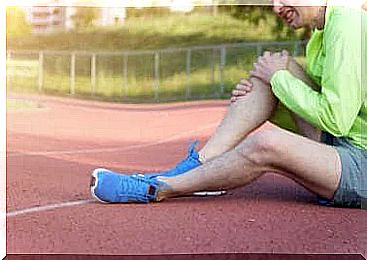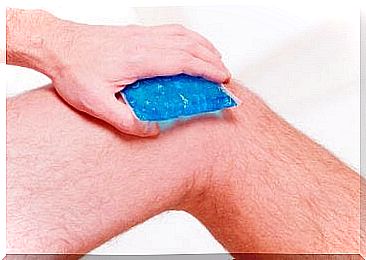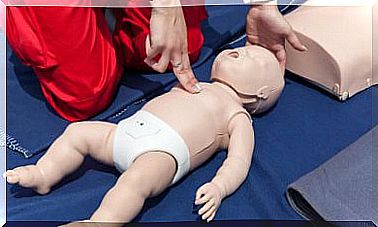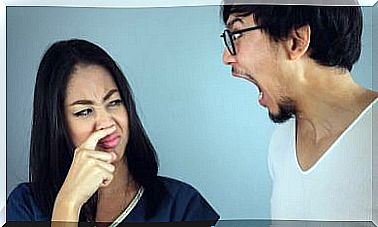Dislocation Of The Kneecap
A patellar dislocation is a relatively common knee injury that usually occurs as a result of sudden movement as a result of an accident. Find out more about this topic today.

A dislocation of the kneecap or patellar dislocation occurs when the kneecap jumps out of the sliding bearing provided by a corresponding movement. This can happen with a fall, a blow to the knee, or a sudden twist.
Often the kneecap pops out of the knee to the outside, which is more likely during exercise.
The kneecap is a small, triangular bone covered in cartilage tissue. It is located on the front of the knee joint, embedded by the large extensor tendon of the thigh muscles, and fits perfectly into the plain bearing of the thigh bone.
Dislocation of the kneecap: what causes can lead to it?

Patellar dislocation often results from a dislocation of the knee when stepping on the floor. But it can also come from a direct injury to the knee joint.
Almost always there is a biomechanical abnormality that makes people more susceptible to this injury.
If the knee is dislocated, the joint loses stability and the affected person can fall to the ground. He also feels intense pain and cannot bend his knee. The injury can be seen with the naked eye and the knee appears to be deformed.
If the patellar dislocation occurs as a result of direct trauma, all elements that hold it, including the joint capsule, can be injured.

Risk factors that increase the risk of dislocation of the kneecap
Several factors can increase the risk of patellar luxation. These include, for example, being tall, being overweight or having previously dislocated the kneecap and other knee injuries.
In addition, it must also be taken into account that certain physical characteristics also increase the risk of patellar luxation:
- Elevated patella (patella alta): If the kneecap is too high, the quadriceps can cause a dislocation.
- Knock knees (genu valgum): An inward misalignment of the leg axis, also known as knock knees, widens the angle between the quadriceps and the patellar tendon, which encourages the kneecap to pop out.
- Too far outward insertion of the patellar tendon
- Tear of the medial patellofemoral ligament: This ligament connects the kneecap to the inside of the thighbone and prevents it from jumping out of bed when the knee is extended. Patellar luxation usually occurs in this position.
Dislocation of the kneecap: diagnosis and symptoms
To diagnose, the doctor palpates the kneecap and flexes and moves the knee in different directions. In addition, an x-ray, magnetic resonance or computed tomography confirm the exact position of the kneecap and make it clear whether there are other injuries.
On the other hand, the following symptoms usually occur with a patellar dislocation:
- Swelling and deformed knee
- Inability to bend or support the knee
- The kneecap is not in place
- Tenderness and pain
- Kneecap hypermobility
- Injuries to the cartilage that increase the risk of osteoarthritis
How can you relieve the pain?

To relieve the symptoms of a patellar dislocation, the following measures are recommended:
- Nonsteroidal Anti-Inflammatory Drugs: These can help relieve swelling and pain. However, it is imperative that you see a doctor for an examination. He will then prescribe the correct medicines for you.
- Applying ice packs: Cold helps to relieve swelling and pain and at the same time prevents tissue damage. Put an ice pack on your knee and always follow the doctor’s instructions.
- Elevate the leg: Try to elevate the knee a little higher than the heart whenever possible. You can do this to help reduce the pain and swelling.
- Physiotherapy: The physiotherapist shows you various knee movements and exercises to strengthen the knee joint and thus improve stability. You can also use it to relieve pain.
Conclusion
In some cases, there are no preventative measures that can be taken to prevent dislocation of the kneecap. This is especially the case if various factors make you more prone to this injury. But certain exercises and techniques can help you to strengthen your knee joint and keep it flexible.









